ASTM is an international standards organization is located in the United States of America. The purpose it was introduced to the industry is to publish technical standard agreements for various materials, product, systems and others. Among the ASTM standards that are often used in the industry is ASTM D1004.
ASTM D1004 Test Standard
Description For ASTM D1004
ASTM D1004 is an international test standard design for testing the tear resistance of flexible plastic film and sheeting at very low rates of loading. This test standard measures the force to initiate tearing. Manufacturing industries such as plastic, packaging, food industry and others often use this standard. This test is performed to check the quality control of the plastic film. Nowadays, ASTM standards are highly preferred by both corporate or government bodies. In Malaysia, most industries use the ASTM D1004 standard in their companies. The Malaysian government has also adopt this standard.
Basically, ASTM D1004 measures the tear resistance of flexible plastic film and sheeting. This test can be perform on using Universal Testing Machine (UTM) ,ASTM D1004 measures the maximum tear resistance (force) in lbf or N and measures the maximum extension (length) in mm or In. The specimen is subjected to a tensile test at 2 in/min (51 mm/min) until complete failure.
Specimens For ASTM D1004
The specimen must be die-cut to specifications found in the standard. To cut the shape of the specimen, ideally using a die cutter. The shape of the specimen is design to create a tear when the specimen is pulled in tension. The thickness of the specimen is less than 0.25 mm.
1. Die cutter
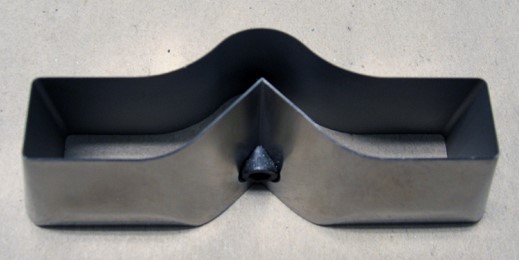
- Used to cut specimens into specific shapes.
2. Specimen
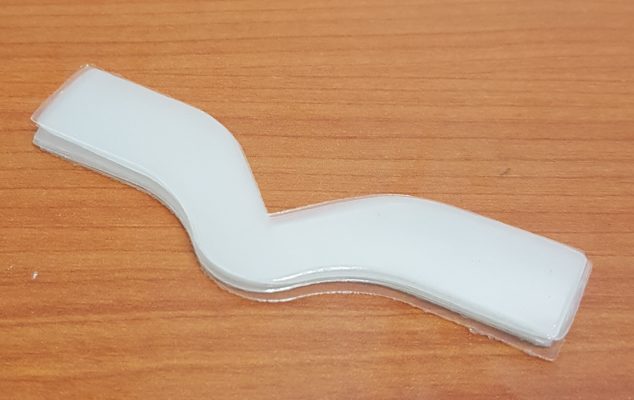
Grips For ASTM D1004
1. Eccentric Roller Grip
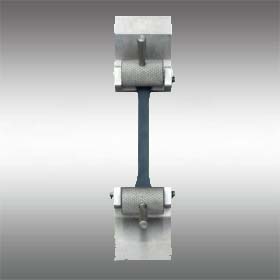
Easy to use and self-tightening applicable for soft and flexible samples, foils, plastics,rubber, etc.
2. Side action grip
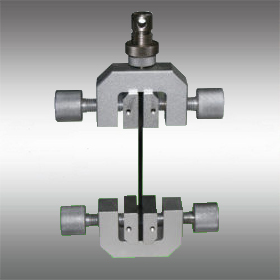
Suitable to test fabric, textile webbing, metal, film, rubber and plastic
3. Pneumatic Grip
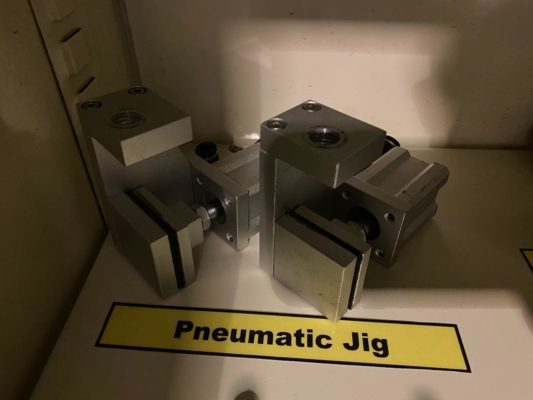
Pneumatic grips are particularly useful when a variety of materials. The gripping force is generate by pneumatic cylinders acting directly on the jaws or via a lever system.
Type of UTM machine
We recommend to use UTM machines with a capacity of 50N-20kN, it depends on the strength of the specimen. We also recommend using smaller machines such as single column or dual column floor types.
1. VEW 220E
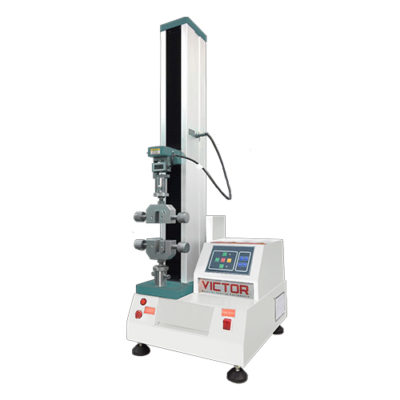
VEW 220E desktop computer servo testing machine is a new material testing machine that combined with the electronic technology and mechanical transmission, it has accurate load speed, range of force measurement, Has high accuracy and sensitivity for the load, displacement measurement and control. This series of machine using single-space structure, operational space at the bottom, it is mainly apply to test non-metallic and metallic material, which the load is less than 1kN, it has the parameters, such as stress, strain, the control mode of displacement, calculated max force, tensile strength, bending strength, compressive strength, elastic modulus, rate of elongation, yield strength and others.
Main function:
This machine can be apply to test lots of materials in tension, compression, tear, peel (can 90 degrees and 180 degrees) and other mechanical tests, such as rubber, tires, belt, shoes, plastic, film, acrylic, FRP, ABS, EVA, PU, aluminium-plastic pipe, composite materials, waterproof materials, fibers, textiles, wire and cable, paper, gold foil, ribbons, thread, spring, wood, medicine packaging materials, tapes etc.
2. VEW 2307
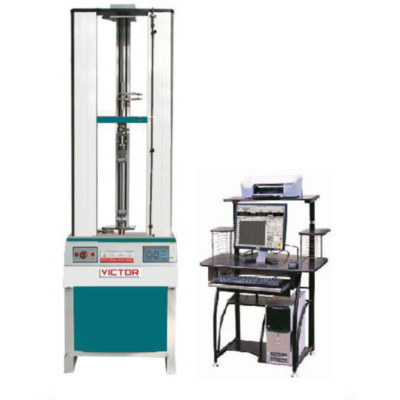
VEW 2307 Desktop microcomputer-type tensile testing machine is designed by our company which is made of aluminium, it is not only small, used widely, do not take up space, nice appearance, but also easy to move with the hoop, it is very convenient to operate.
- It is controlled by computer and printing out the testing report; the outward appearance used the closing board dealing with high-level baking varnish, which obviously elegant
- It especially suitable for controlling quality in the production line, this series of machine is mainly apply to test the non-metallic and metallic materials which the load is less than 2KN
3. VEW 2308
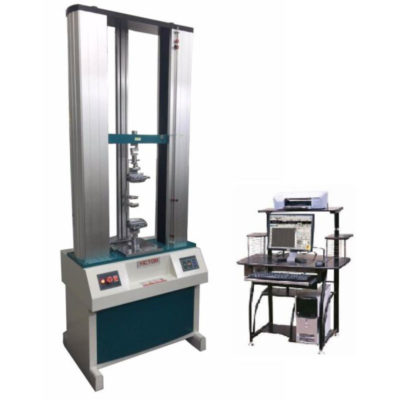
The machine is designed by mechanical-electrical integration, the composition of the force-measuring Sensor, transmitter, microprocessor, mechanism of load drive, computer and color inkjet printer. The high-precision electronic motor can be set to five-speed, the components are connected by plug-way, Floor-standing models, it is taken account of modern industrial design and ergonomics in modelling and Coating. It can be tested with all the materials in a stretch, compression, bending, shear, embedded relay, Peeling. tearing, crack, etc, such as rubber, plastics, leather, metal, nylon wire, fabric, paper, aerospace, packaging, construction, petrochemical, electrical, vehicle, etc.
The implementation of standards and standard configuration:
- GB/T4689.20-1996 Measuring fastness of leather’s adhesion
- QB/T2710-2005 Measuring leather’s expansion and the rate of elongation
- QB/T2711-2005 measuring tear force of leather
- QB/T2712-2005 measuring leather’s strength and stretch of spherical crack test
Test Procedure
- Prepare the specimens as described in the method.
- The specimen is die-cut to the appropriate shape from a sheet.
- Measure the average thickness of the specimen.
- Place the specimen into grips.
- Clamp specimen at the top of the grip first then carefully clamp the sample into the bottom grip.
- Zero all the testing machine before starting the test.
- Begin the test by Click start button on the software.
-
The test is perform a rate of 2 in/mm (51mm/min) per minute until rupture.
